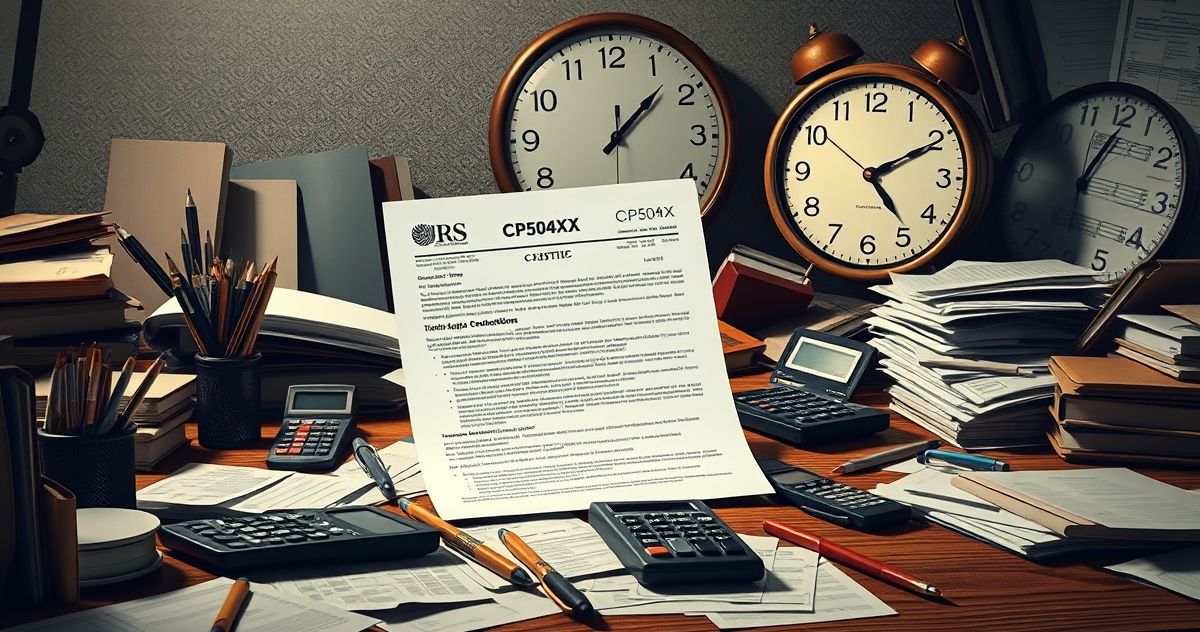Introduction to the CP504X Notice
The CP504X Notice is a crucial communication tool used by the Internal Revenue Service (IRS) to address unpaid taxes by taxpayers. Typically, this notice highlights an urgent issue as it serves as a final reminder before the IRS takes more serious collection actions, such as levying your income or assets. Understanding this notice is pivotal for taxpayers to engage in timely compliance and avoid further complications with their tax obligations.
Primary Purpose of the CP504X Notice
The primary purpose of the CP504X Notice is to inform taxpayers that they have unpaid taxes that are due immediately. It acts as the IRS’s final attempt to prompt the taxpayer to resolve their debt before enforcement actions commence. This notice comes into play after earlier notices have been issued and ignored, making it a critical document in the IRS’s collection process.
Key Features of the CP504X Notice
The CP504X Notice contains several key features that taxpayers must be aware of:
- Balance Details: The notice includes the amount owed, which comprises the original tax amount, accrued interest, and penalties.
- Payment Deadline: A specific deadline by which the balance should be paid is provided to prevent escalation of collection measures.
- Consequences of Non-Compliance: Detailed information about potential IRS actions, such as levies on bank accounts or wage garnishment, if payment or arrangement is not made by the deadline.
- Contact Information: Instructions on how to make the payment and contact the IRS are clearly stated for the taxpayer’s convenience.
Compliance Requirements and Responses
To comply with the CP504X Notice, taxpayers should either pay the full amount due immediately or contact the IRS to set up a payment plan if paying in full is not feasible. Failing to respond adequately or meet the payment requirements can lead to severe financial consequences, making it critical for taxpayers to act promptly.
- Paying the Balance: Payments can be made online via the IRS’s payment portal, by mail, or by phone through various payment methods.
- Setting Up a Payment Plan: Options like an installment agreement can be negotiated, which allows the taxpayer to pay the owed amount over time.
Penalties and Consequences for Non-Compliance
The failure to comply with the CP504X Notice can result in the IRS increasing the severity of their collection efforts. Consequences may include:
- Levy on Assets: The IRS may seize funds from bank accounts or other financial instruments to cover the taxes owed.
- Wage Garnishment: To satisfy the debt, the IRS can legally take a portion of your wages directly from your employer.
- Additional Penalties: Continued delinquency can lead to increased penalties and interest, further burdening the taxpayer with debt.
Importance of the CP504X Notice
The significance of the CP504X Notice cannot be overstated as it underscores the gravity of unresolved tax liabilities. It ensures taxpayers are aware they are on the brink of enforced collection actions, providing a last chance to resolve their tax debt amicably. Proactively addressing the CP504X Notice can prevent further financial strain and complications.
Moreover, handling this notice swiftly aids in avoiding the negative impact on credit scores and financial standings. By paying the owed amount or effectively communicating with the IRS to arrange a feasible payment solution, taxpayers can avert the escalation of penalties and maintain better financial health.
Conclusion
The CP504X Notice is a pivotal alert that serves as a final warning for taxpayers with outstanding tax debts. It highlights the urgency with which taxpayers need to act to prevent enforced collection actions by the IRS. Understanding and responding to this notice promptly not only reflects compliance but also helps in maintaining fiscal responsibility and avoiding further complications with the IRS.
Taxpayers should always consider consulting with a tax professional or advisor when navigating IRS notices, especially one as critical as the CP504X, to ensure the most effective resolution of their tax issues.

